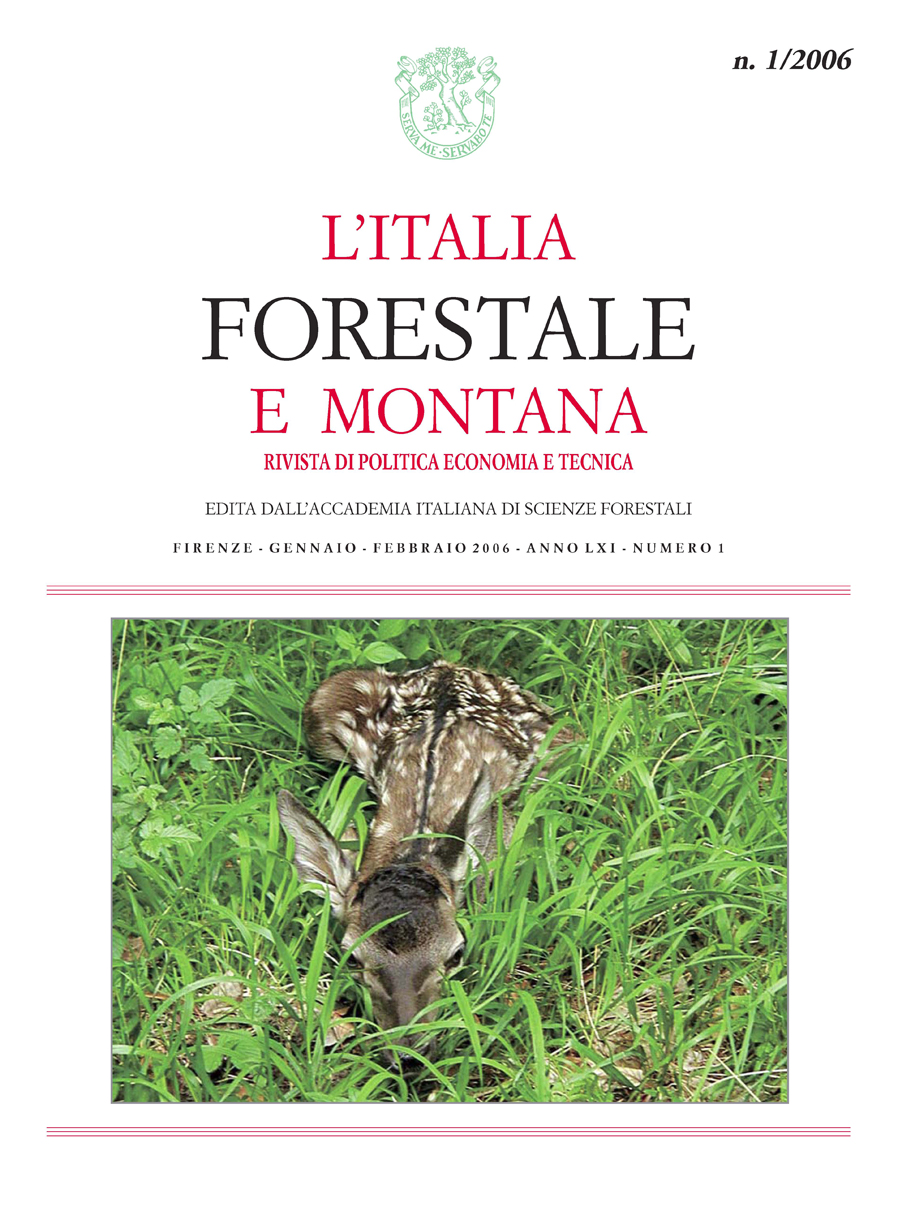Articles
Influence of land use changes and silvicultural management strategies on soil carbon allocation in forest ecosystems
Published 2006-02-08
Keywords
- carbon allocation,
- soil carbon,
- forest ecosystems,
- litterfall,
- soil respiration
Copyright (c) 2006 Italian Journal of Forest and Mountain Environments

This work is licensed under a Creative Commons Attribution-NonCommercial 4.0 International License.
Abstract
Allocation of C to belowground plant structures is one of the most important, yet least well quantified fluxes of Cin terrestrial ecosystems. RAICH and NADELHOFFER (1989), after revising published data on worldwide forest ecosystems, suggested that total belowground C allocation could be estimated from the difference between annual rates of soil respiration and aboveground litterfall. DAVIDSON et al. (2002) extended the analysis of published data validating RAICH and NADELHOFFER’S conclusion for mature forests, though, along with GOWER et al. (1996), using the model to estimate total root C allocation and to construct C budgets for a stand was not considered an acceptable substitute for measuring soil C fluxes. In this literature review we analyze new measurements of soil respiration and litterfall, including young and mature forests on a global scale. Our results generally agree with previous works, confirming that aboveground and belowground production is controlled by the same factors. Over a gradient of litterfall-C ranging from 52 to 530 g m-2 year-1, total belowground C allocation increases from about 90 to 1800 g m-2 year-1. The ratio of belowground C allocation to litterfall decreases approximately from 12 to 2.5 as litterfall-C increases from 50 to 200 g m-2 year-1, but changes little as litterfall-C increases from 200 to over 500 g m-2 year-1. A regression analysis of data from worldwide forests produced the following relationship: annual soil respiration = 140 + 3.09 × annual litterfall. This regression slope indicates that, on average, soil respiration is roughly three times aboveground litterfall-C, which further implies that total belowground C allocation is roughly twice annual aboveground litterfall-C. The regression slope for data from young forests is steeper than in the case of mature forests, possibly indicating proportionally greater total belowground C allocation, but the steady-state assumption is more problematic for young forests. Indeed, these inferences are based on the uncertain hypothesis of soil C stocks being at steady state. Nevertheless, changes in soil C would have to be very large to modify the conclusion that total belowground C allocation is generally much larger than litterfall. These relationships allow the construction of simple C budgets that can be used to place upper limits on estimates of fine root production in forest ecosystems. Determining live-root respiration rates in forest ecosystems may further constrain the range of possible root production rates, and test the hypotheses that total root C allocation increases with aboveground net primary production and that the ratio between total root C allocation and aboveground net primary production decreases along global resource-availability gradients. The global scale statistical relationship derived using forest C budgets should be evaluated at smaller scales to identify how C-allocation patterns in forests vary in relation to stand age, species composition, and management practices.

